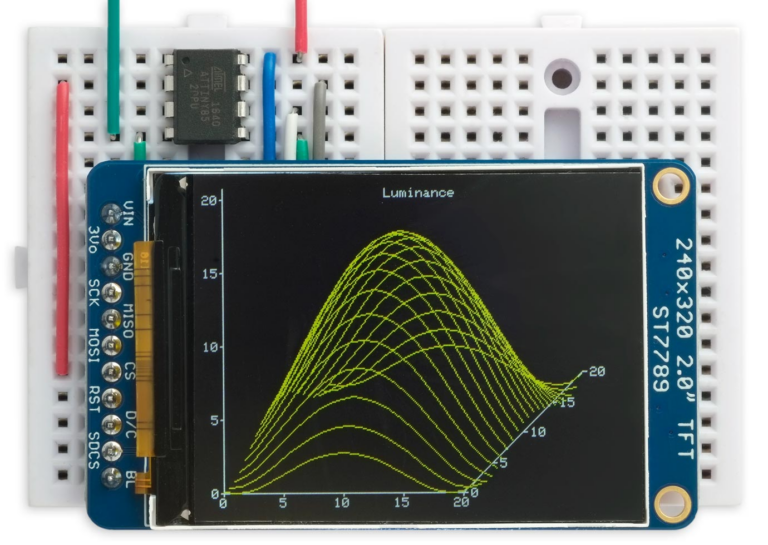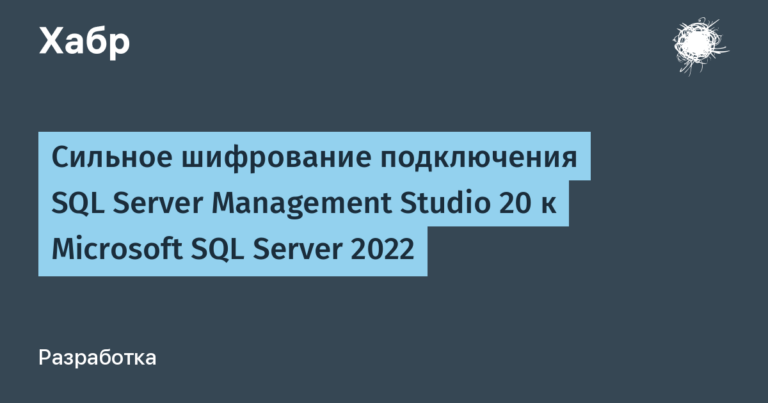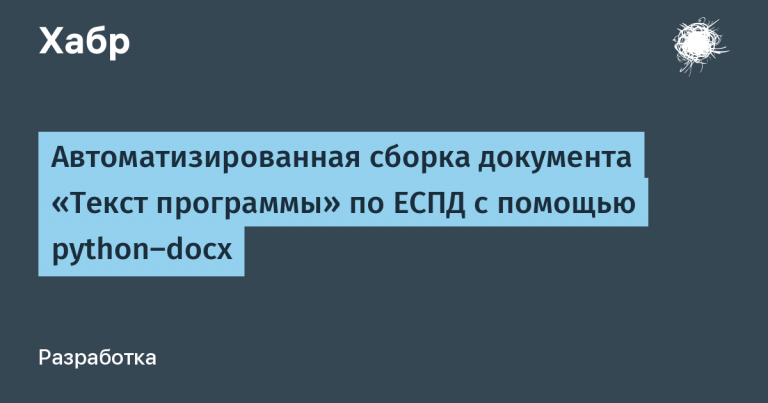Prospects for the use of neural networks in the clinical practice of dentists
Prospects for the use of neural networks in the clinical practice of dentists, orthopedists and the possibility of using trained neural networks in the practice of modern dental laboratories. Today, digitalization is an integral context for the existence of any sphere of the human community, be it science and technology or an entire industry. The constant introduction of cybernetic systems and complexes can significantly facilitate the applied aspects of the operation of various types of technological chains, and sometimes can significantly reduce the risks of errors associated with the human factor. These phenomena do not bypass diagnostic and applied dentistry. This is what I wanted to talk about in this review.
Today, several international technology companies, such as Ontico or Align Technology, specializing in machine learning and artificial intelligence, have managed to go a certain way in creating and training neural networks to recognize teeth, dentition and gums, smiles and faces. And using the capabilities of artificial neural networks, we will establish a cloud service for the semi-automatic collection of dental orders, then the production and distribution of dentoalveolar prosthetic products and test the prospects for using specially trained artificial neural networks directly in scanning the dentition and in the subsequent modeling of dental products.
Some difficulties inevitably arose at the stages of discretization of optical images, but the development trend of these systems will continue, moreover, it is clearly in favor of replacing the manual component in the profession of dental technician. The dental technician becomes an operator of automatic and semi-automatic systems. He will not be engaged in scanning and modeling of dental bridges himself, but will provide units and systems with access to materials for diagnostics and subsequent 3D printing. Because the above systems are rapidly condensing today the experience and principles of orthopedic dental practice and the intellectual principles of laboratory production processes.
This undeniably positive fact makes us hope for the possibility of deepening and scaling these technologies and the immediate mass distribution and simplification of the creation and promotion of dental services among the population. A massive part of the competencies and responsibilities is moving to cybernetic complexes with the accumulated experience of many specialists in various clinical areas of dentistry and medicine, kinematics and orthopedics in a broad interdisciplinary understanding of this issue. In parallel with the adoption of the experience of a clinician, a medical technician, a designer with mathematical algorithms, a more abstract way of understanding the meaning of orthopedic rehabilitation as feature generation is being developed, in a certain sense, this is the isolation by neural networks from the masses of data of certain principles and features of the sculpture of prostheses, which are not always reduced to repetition of statistical morphology and their further construction into a hierarchy applicable for auto-generation of bridge and prosthetic crowns. It is likely that new specialties will arise and be in demand, such as medical technician – operator of robotic or cybernetic medical systems. Novice specialists will be quickly integrated into production processes. In this regard, a new formation in education, production and medicine in general is taking shape – this is the so-called “Cybernetic Dentistry”.
So, diving into the specifics of dental prosthetics, there are several mandatory steps in the process of making dentures and artificial crowns. Namely: obtaining impressions of the dentition, gums or teeth after grinding. Impressions can be convection or digital, and digital, in turn, can be laboratory optical scans from models made from analog impressions or obtained directly during optical scanning of the patient’s oral cavity in clinical practice. In both cases, a number of uncontrolled methodological errors arise, resulting in incomplete compliance of prosthetic products with the tooth and gingival bed.
In our opinion, this problem can be partially or completely eliminated if the capabilities of the mathematical and algebraic apparatus embedded in specially trained artificial neural networks are properly used in the dental clinical and production cycle. A few words about artificial neural networks. The main idea of neural networks is modeling (copying in a simplified but fairly accurate way) a set of human brain cells tightly interacting with each other inside a computer program, so that we can teach it (the set) to recognize various patterns and make decisions like a person. A kind of digitalization of brain functions, if you like. Although biological neural networks are much more complex. Yet the most amazing thing about neural networks is that they do not need to be programmed for explicit learning; the network learns on its own, like a brain.
So, in the most general sense, these are certain mathematical models implemented in code, programs and hardware systems, arranged in a certain sense according to the principles of functioning of the physiological neural networks of living organisms. Most often, neural networks are multilayer, and their minimum unit is an artificial neuron perceptron (in the case of the simplest network), or an artificial synapse in some cases.
By the way, neural networks today are most often multi-layered, or even multi-block, from 3 layers to several hundred with various reservations. And their architecture can vary greatly. Each layer processes in a certain way, according to pre-developed algorithms, the incoming optical or infrared signal, or any other signal (it must be said that today any signal can be represented in the form of an image or picture – both chemical and physical and thermal), transmits it to the next layer, ultimately forming a complete structure for recognition, understanding and subsequent operation and decision making. Without going into details, incoming signals also have their own so-called “weight,” by which one can judge the importance of this particular discrete feature or group of features, the incoming signal, in understanding the entire integrated picture. In short, today a computer can be taught to accurately “see” a tooth, gum, jaw, face and use this data for precision automatic modeling of dentures and crowns, thus predicting the outcome of interventions with less error than traditionally.
This logic is further included in the work of reconstructing models of teeth and jaws from 3D scans and is applied in the subsequent modeling and production of dental restorations and prosthetic products in the dental laboratory. Now the medical market offers laboratories various methods for manufacturing prosthetic products, this is directly 3D printing from various medical polymers, plastics and composites. For metals, this is selective laser fusion or milling on special machines, traditional investment casting.
Our colleagues from Align Technology managed to discover and use the potential of neural networks in the following way. First, using many thousands of dental scans (about 150 TB), they learned to recognize each tooth separately; this is very important, since the task is non-trivial.
Then, using many thousands of cases of laboratory models of ground stumps of teeth and having “taught” the neural network to recognize the boundaries of tooth preparation (preparation techniques), we were taught, so to speak, to “interpret” the contours of prepared teeth that were not properly displayed, significantly filling the digital gaps in clarifying the boundaries of preparation from 1 – 50 microns and the relief of the prosthetic surface of the stumps of the teeth.
Now, if such methods for recognizing preparation boundaries become established in digital dentistry, then it will be possible to significantly reduce the requirements for scanning quality, and scan from any camera and smartphone with average technical capabilities, which will cause an even more intensive development of digital dentistry.
It must be said that now some interfaces have a built-in so-called “virtual articulator” (the simplest function of vertical stretching and sliding of virtual models of dentition) and it provides certain convenience in the work of the technician, but everything is heading towards the fact that a trained neural network will be able to imitate the entire articulatory expression, up to swallowing and phonetic tests, and not just protrusion and two laterotrusions (anterior and lateral displacement of the lower jaw).
Having trained the neural network to understand which particular tooth is planned to be recreated (modeled), guided by the contours of the stumps of ground teeth and the surfaces of antagonists, a photo scan of the head, by connecting the kinematic module, it will be possible to fully automatically model or adapt from an already accumulated database of modeled bridges and crowns, possible again -adaptation from databases of intact teeth, future dental bridge, crown in the program interface. Here, most likely, several neural network modules with different task profiles will be integrated for full interaction. For example, a module simulating muscle tone or extensibility, then a module for dynamics and posture, and of course a module for sculpting prostheses.
In addition, with the help of a trained neural network, it will be possible to show the patient what his smile and occlusion will look like after treatment (it is even possible to predict how the phonation of reference sounds will occur). This involves taking a photo of a smile, then rendering a 3D model of his simulated teeth, and then the program tries to incorporate it into the photo in a way that is close to reality, so that the patient can see how beautiful his smile will look.
This comprehensive concept can take a key place in the functioning of existing resident programs of laboratory and clinical dental scanners, speeding up and compacting the process of creating dental restorations. In other words, what was a separate production run can become a modification of a clinical or laboratory scan of a patient's cast or oral cavity. All this will significantly save time and human resources. Of course, the implementation of these ideas should provoke the creation of new, more intuitive and friendly interfaces and devices (devices) for automatic scanning and preparation. At the same time, it may be possible to integrate new intelligent modules into existing scanner systems. Of course, these intelligent agents will be included in programs for simulating dental restorations and, of course, can become part of programs for automatic tooth preparation in robots and various kinds of electromechanical and intelligent devices for tooth preparation. This means that the initial trial preparation of abutment teeth takes place in the virtual interface, and then, after approval, instructions are generated for preparation trajectories for intraoral preparation devices. In the meantime, prosthetic products may already be ready, again after automated modeling and 3D printing.
The use of this kind of technology to optimize programs for intelligent dental scanning or robotic tooth preparation and automatic modeling of structures is difficult to overestimate, since it is possible to significantly reduce the influence of the human factor on the quality of dental products, prostheses and crowns.
So the subsequent development of this specialty, apparently, will follow new trajectories with a cybernetic bias. A medical technician – operator of cybernetic complexes will control the cyclicity of large flows of input data and outgoing products. That is, scanning of dentition models, prosthetic diagnostics, then modeling of dental bridges and crowns and subsequent 3D printing will occur automatically with minimal time costs and risks of complications.
https://www.3shape.com
https://inohttps://habr.com/ru/company/habr_career/blog/447604/bitec.com/eng
https://habr.com/ru/company/habr_career/blog/447604/
http://www.dentoday.ru/articles/stomgazeta/169/26.php/
https://prosystom.com/
https://www.aligntech.com/
https://www.medit.com/dental-lab?lang=en
http://amann-girrbach.ru/
https://www.zirkonzahn.com
https://www.exocad.com/
https://www.aegisdentalnetwork.com/id/2012/06/making-accurate-master-impressions
https://habr.com/ru/company/oleg-bunin/blog/486028/




